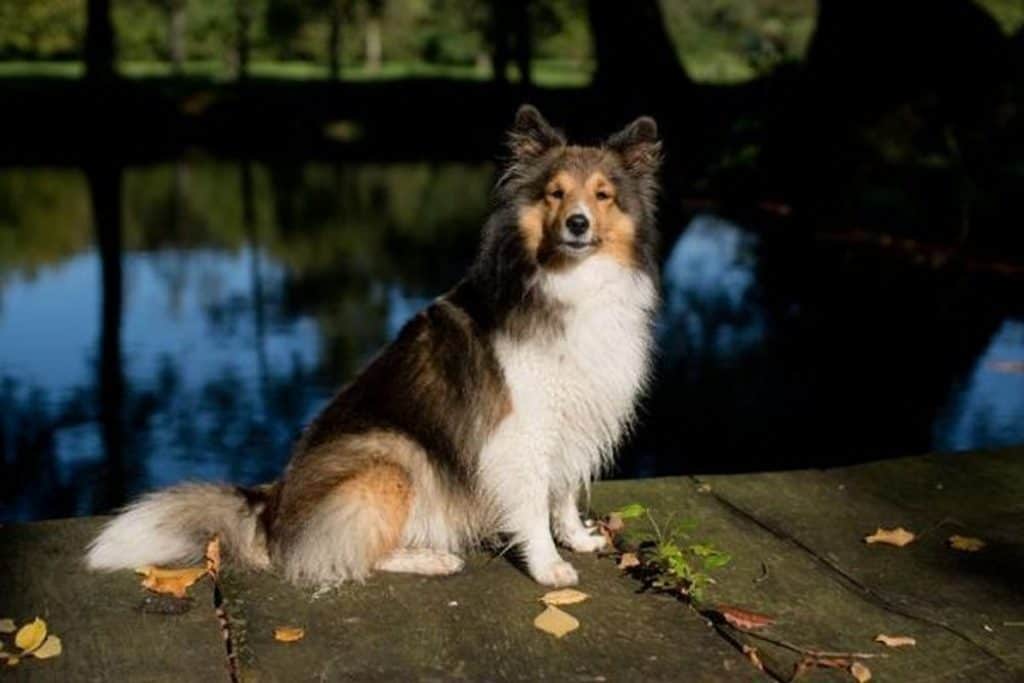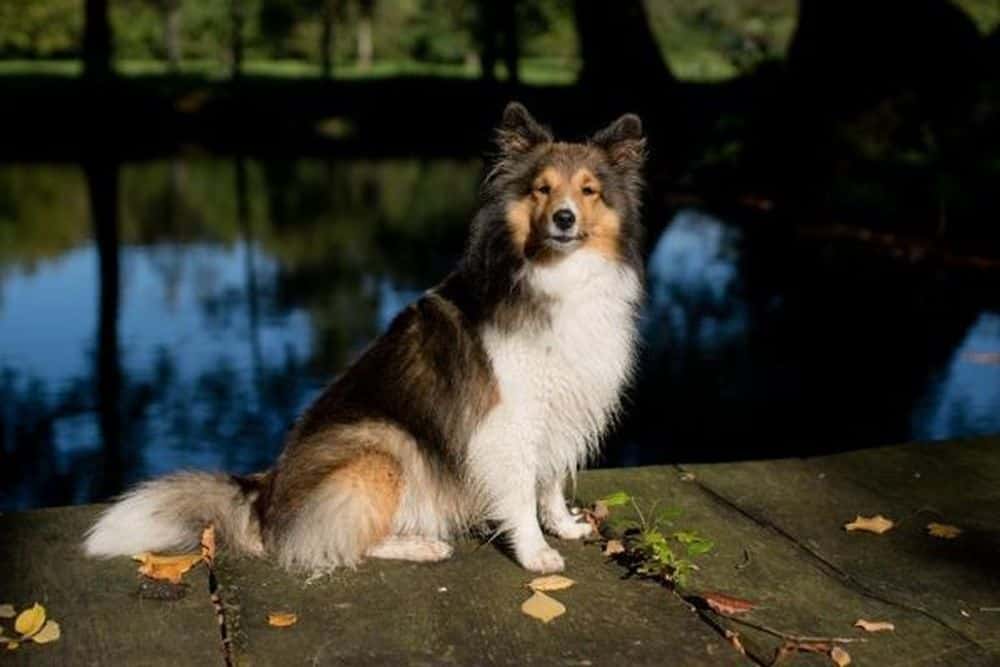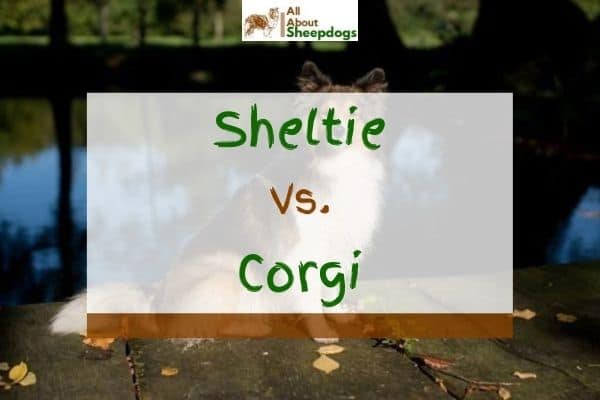In the age of the internet, some dog breeds have gained incredible popularity and surged to the top of the list of the most owned dogs list.
Among those superstars are two breeds hailing from the British isles – Shelties and Corgis. And, it’s not hard to understand how these became so popular.
Both are unbelievably cute, affectionate, playful, and extremely loyal and devoted to their humans.
However, prospective owners should be aware that they are not perfect for everyone. They require an owner that is as dedicated and engaged as the dogs themselves.
Furthermore, there’s a Sheltie vs Corgi dilemma, as differences between these two breeds make each of them suitable only for a certain type of owner.
To provide some clarification, I’ll explore these differences and check out what makes each of these dogs so special.
| Attributes | Sheltie | Corgi |
| Good For First Time Owners | Yes | No |
| Good Guard Dog | Not The Best Choice | No |
| Apartment Friendly | Possible With Enough Exercise | Yes |
| Good Family Dog | Yes | Yes |
| Shedding | Moderate To High | Moderate |
| Barking And Howling | Moderate | High |
| Height | 12-17 inches (33-41 cm) | 10-12 inches (25-30 cm) |
| Average Life Expectancy | 12-15 Years | 12-15 Years |
[wpsm_toplist]
Sheltie – Dog Breed Information

Shelties, also known by their full name Shetland Sheepdogs, originate from the Shetland Islands in the United Kingdom.
They were developed to help the farmers in herding and protecting the livestock, mostly sheep.
Today, they still occasionally serve as working dogs but are best known as family pets and one of the best competition breeds.
Appearance
At first glance, Shelties look like downsized Rough Collie.
They’re small in stature but feature a very sturdy, muscular, and proportional body. When they’re on the move, Shetland Sheepdogs are very agile and graceful.
Like all sheepdogs originating from the colder climate areas, Sheltie’s body is covered with a double coat.
The undercoat is thick and soft and provides protection from high and low temperatures.
The topcoat features long, straight, and rough hair.
Among the most common coat colors are golden, black, and blue merle, often with white markings.
The Sheltie’s head is long and wedge-shaped with a sensitive and gentle expression.
The ears are small and three-quarters erect, while the eyes are always dark-colored and almond-shaped.
Male Shelties grow up to 12-17 inches (33-41 cm) and weigh 13-27 pounds (6-12 kg).
Females are pretty similar to males in height and weight.
Temperament
Unlike most of the other breeds, Sheltie’s personality often varies from one dog to another.
Still, while some are very confident and extravagant, most are gentle, sensitive, and somewhat reserved.
This makes them great family dogs as their sensitivity and affectionate nature allow them to adapt to any family.
Their shyness goes away when they’re with family and they are ready to offer limitless love to their owners.
Shelties are also excellent watchdogs as they are very protective and reserved towards strangers.
However, as they often look to warn the owner of a potential threat, they tend to bark a lot.
Shelties are extremely smart and willing to learn. This makes them fairly easy to train.
Their intelligence and alertness are the reason why they’re always among the best in dog competitions.
On the other hand, this is why they get easily bored, so you’ll have to keep them busy.
Corgi – Dog Breed Information

Corgis are best known as the favorite breed among the ranks of the British Royal Family.
Queen Elizabeth II, herself, has owned several generations of Corgis.
They hail from Wales and the two main Corgi variants are named after the Welsh counties they originated from – Pembroke and Cardigan.
Appearance
Due to their small size, Corgis are often classified as a dwarf breed.
Even their name comes from the Welsh words for “dog” and “dwarf”. Still, even though they’re small, Corgis are very sturdy, strong, and athletic.
With their long bodies, pointy muzzle, and pricked ears, Corgis look a lot like foxes.
The strong legs, muscular thighs, and deep chest reveal the hard worker hiding inside every dog of this breed.
Corgi’s body is covered in a water-resistant double coat. The topcoat hairs are medium-length, coarse, and dense.
The undercoat is softer and provides extreme temperatures protection.
The most common colors are red, fawn, sable, or black and tan. They can be with or without white markings.
Adult males can be 10-12 inches (25-30 cm) and have 22-31 pounds (10-14 kg).in weight.
Females’ height is 10-11 inches (25-28 cm) and they weigh 24-28 pounds (11-13 kg).
Temperament
Despite their working and herding history, Corgis are today mostly used as family dogs. They’re very affectionate, lovable, and loyal to their family.
They enjoy every moment spent with their humans and want to be a part of family activities as much as possible.
In addition, they’re particularly great around kids.
Still, with all the love Corgis are prepared to give, they’re not to be messed with. They’re feisty dogs who have preserved their courage from their herding days.
They have plenty of energy and love to be given tasks to fulfill.
As they’re so energetic and agile, they will easily keep up with their owners on runs, hikes, or bike rides.
Corgis are smart, eager to learn, and willing to listen to their owners which makes them easy to train and socialize with.
They can be a bit stubborn sometimes, but that is easily dealt with through early training.
Sheltie vs Corgi – What are the Differences?
| Sheltie | Corgi |
 |  |
When it comes to appearance, Shelties and Corgis have similar sheepdog stature, but Shelties are a bit higher and have longer hair.
Their long and thick coat also makes grooming somewhat more difficult.
Furthermore, they shed more which is a thing to keep in mind, especially if you plan to keep them inside your home.
On the other hand, Corgis tend to bark more which can be an issue for apartment living.
As for the personality, there’s not much difference between these two breeds.
Corgis are slightly more stubborn and independent.
This is likely the consequence of the fact that they were mostly used to take care of cattle, while Shelties were more often in charge of the more meekly-behaving sheep.
For this reason, Corgis have more nipping tendencies but are also more confident.
Both breeds have a similar lifespan, 12-15 years.
Conclusion
I hope this helps if you plan to get a dog and your dilemma is Sheltie vs Corgi.
The good news is that each of these breeds makes for a wonderful family pet. Shelties and Corgis are lovable, loyal, and always happy to please their owner.
In addition, they get along great with kids, even the youngest ones.
Plus, they kept the traits that made them great working dogs throughout history. They’re brave, active, and alert.
Of, course, as all sheepdogs, they will need proper training and early socialization.






